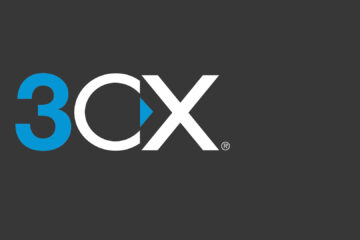Consider how much contact centers have changed in just the past 10 years. What was once a hub for voice interactions has quickly evolved into a center for omnichannel engagement across the enterprise. Today’s customers expect seamless transitions from digital to voice channels. This requires all their information and the steps taken to get from one point to the next to be stored and readily available in real-time so that the customer can shift from chatting to a representative to talking to one without having to repeat their issue.
Realizing the Need for Digital Transformation
While it’s easy enough to identify the need to provide an omnichannel customer experience, it’s not as simple to deliver it. Many organizations are hindered by legacy, voice-centric systems that have fallen behind in the market and were never intended to support a rapidly growing volume of digital interactions.
They are struggling with the service-hindering problem of disparate channels and systems while also being acutely aware that the customer experience has become a key competitive differentiator.
Undergoing a digital transformation to overcome the problem of a siloed customer experience has become essential for sustaining success. This starts with evaluating existing infrastructure. For some organizations, a rip-and-replace approach is a right option. Digital transformation can happen quickly by deploying a modern solution that supports an omnichannel customer experience. However, the bigger challenge is for those who want to hang on to outdated technology. Building on top of a legacy voice-centric system can be very tricky under the best of circumstances. In most cases, adapting existing infrastructure for today’s more complex customer journeys is costlier and more time-consuming than deploying a new solution.
The Challenge of a Voice-Centric System
With the average contact center supporting 11 communication channels, customer experience is a key competitive differentiator that increases loyalty, revenue, and cost savings. It seems logical that all organizations would have these channels seamlessly connected to provide the omnichannel experience customers now expect. Yet, less than 10 percent currently do. Why? Much of the problem has to do with integration.
Building on top of a legacy system is a costly and time-consuming endeavor that rarely results in the desired outcome. Too often, the outcome of integrating digital channels is limited visibility and disjointed data. Meanwhile, the demand for digital capabilities continues to grow. With every new channel added, the system becomes increasingly complex, and the risk of a disruption or even a system-wide failure grows.
This problem is compounded by the inability to integrate solutions and applications that drive successful customer relationships and business results, like CRM and workforce optimization. And this is made even more complicated by inefficient routing capabilities that were never intended to support journeys across channels. In other words, achieving omnichannel success by building on a legacy call center system is not a sustainable or sound decision.
The Advantages of a Customer Experience Platform
As customer expectations rise, struggling with an outdated voice-centric system becomes riskier. A safer alternative is migrating to a contact center platform that supports omnichannel customer journeys.
With the Genesys Customer Experience Platform, you can immediately integrate new and existing channels, solutions, and applications to optimize your customer experience, as well as your workforce and business processes. You also gain the advantage of moving beyond queue-based routing to intelligently route customers in real-time using history and context.
A Phased Approach
The argument for sticking with a legacy system is often that it has years of remaining life. However, this needs to be compared with the advantages of removing dependencies on a system that is rapidly becoming obsolete. Migrating to a new platform offers the advantages of being able to innovate, move to the cloud and reduce continued investment in aging technology. For some, this is enough to migrate in a single shot. For others, a phased approach can be leveraged to maximize any remaining lifespan of an existing voice-centric system. The customer experience platform can be deployed to support digital and self-service channels while representatives continue to use the legacy provider for telephony until it’s time to make the complete shift.
With the right contact center solution, silos are erased internally without needing complicated integrations, making customer experiences effortless. From a long-term perspective, the foundation is now in place to meet what may come in the future as the evolution in customer experience continues to unfold.



0 Comments